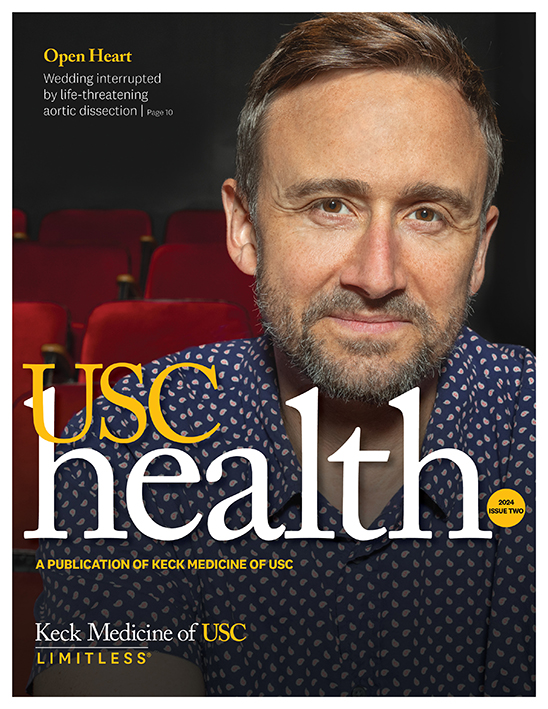
With the help of an innovative treatment and the expertise of Ivan Ho, MD, at the USC Cardiac and Vascular Institute, Kent Demaine defied the odds in treating his atrial fibrillation.
If Kent Demaine could go back in time and change one thing, he would not have waited so long to treat his atrial fibrillation.
“If I had known what I know now — that you can get it done and feel great and get back in the game so quickly — I would have done it much earlier,” Kent says.
AFib diagnosis in younger, healthy individuals
In his early 40s, Kent noticed his heart beating irregularly as he was falling asleep. By morning his heartbeat was normal, so he would put it out of his mind. As an otherwise healthy person, he didn’t figure those early episodes would become a chronic problem.
Atrial fibrillation, also known as AFib or AF, affects at least 5 million people in the United States. It’s common among older people and those with related heart problems or thyroid issues.
There is a genetic component, which may explain why it also hits young, healthy people. A primary concern is that AFib increases the risk of stroke five-fold and doubles the risk of heart failure. If left untreated, it can progress from episodic bouts to being in a constant state of AFib
Ivan Ho, MD, director of electrophysiology for Keck Medicine’s USC Cardiac and Vascular Institute, notes that waiting until the patient is in a permanent state of AFib, or chronic AFib, makes treatment more difficult. He adds that younger patients like Kent are typically the ones who delay treatment.
“Many young people are highly functional with AFib,” says Dr. Ho, who is a clinical associate professor of medicine at the Keck School of Medicine of USC. “For that reason, it often gets picked up later or they don’t seek treatment right away.”

Treatment for advanced atrial fibrillation
Kent’s episodes increased until, eventually, he was in a persistent state. At that point, the former NCAA Division I swimmer would get winded just by walking his dog.
His mind lacked sharpness and — even with drinking increasing amounts of caffeine — he never felt like he was firing on all cylinders.
Some people eventually identify triggers, such as alcohol, and manage their condition by avoiding them whenever possible. There are also medications that can help control the heart rate and reduce the risk of stroke during AFib episodes.
By the time he saw a doctor, Kent’s condition was extremely advanced. Catheter ablation was now his best option to correct his arrhythmia. However, he was warned that putting it off had diminished the likelihood of success.
What is catheter ablation for AFib?
According to Dr. Ho, catheter ablation returns the patient’s heart to a normal sinus rhythm 85% to 90% of the time when it is performed in the early stages. By the time a patient has been in a persistent state of AFib for a year, the likelihood of achieving a normal rhythm falls to 50%.
The procedure involves inserting catheters into the heart via large veins in the thigh. Radiofrequency energy is used at the tip of the catheters.
The aim is to destroy the heart tissue that has abnormal electrical activities that are causing AFib. Many patients mistakenly assume the procedure is risky and requires a long recovery, so they put it off.
From the moment you open your eyes after surgery, you feel instant relief.
Kent Demaine, patient, Keck Medicine of USC Cardiac and Vascular Institute
However, intracardiac 3D mapping technology and real-time ultrasound imaging used during the procedure allow doctors to precisely locate the problem in the heart, says Dr. Ho. He adds that serious complications are rare, affecting only about one in 500 to 1,000 patients.
Kent fell back into AFib after his first ablation, which can happen with advanced cases. Dr. Ho performed his second ablation in 2020. Kent’s heart has been in a regular rhythm ever since.
After a second procedure, the success rate for tough cases goes back up to about 90%. According to Dr. Ho, Kent’s prognosis is good.
“From the moment you open your eyes after surgery, you feel instant relief. I felt 15 years younger,” Kent says.
Topics


